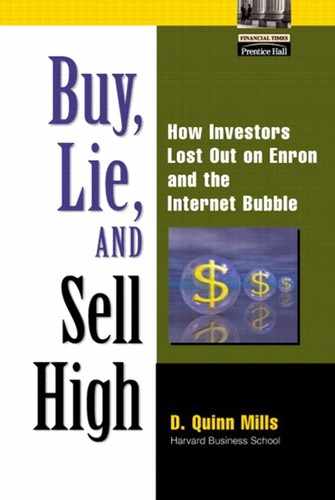A Strategy's Limitations
For a start-up, the get-big-fast strategy has its place; there are circumstances in which it makes sense. They have recently been defined with admirable clarity by Thomas Eisenmann of the Harvard Business School in two books.[35] The appropriate setting for such a strategy is one in which large up-front investments are required, there is the likelihood of network economics (meaning that the customer prefers one provider to several, usually because when all customers are using the same provider, they can communicate with one another—the most dramatic current example is the preference for a Microsoft operating system by most personal computer users—perhaps some people would say today that customers now have little choice), and where there are not well-established competitors to contest the market. These conditions create a winner-take-all dynamic in which a start-up can be the winner if it can get-big-fast enough.
Incidentally, America Online (AOL) has been another widely watched example of the successful application of a get-big-fast strategy. AOL acquired more than 20 million subscribers by the fall of 2000 after “carpet bombing” the United States for years with disks containing free software for installing AOL.
But in the case of AOL, unlike Amazon, the conditions for a successful use of the strategy are largely met. The business requires large start-up investments (a barrier to entry); it has definite network effects (seen in AOL's Instant Messaging product). And AOL had no well-established competitor—though companies like ADT later tried to contest the space.
A key condition for a successful get-big-fast strategy is that there be few competitors—showing the firm really has a head start on potential rivals. Venture investing's “best known law,” wrote an observer of the venture world, “is 'Market risk is inversely proportional to technical risk…' If the product is easy, presumably others will come up with it and crowd the marketplace.”[36] When investing in dot-coms, venture firms were picking companies with low technical and high market risk. Yet they seemed to ignore the virtual certainty of competitors.
In the bubble period, the supposed advantage of being first in the market came to be labeled a first-mover advantage. But such a situation usually did not exist. For example, four major start-ups, each using a get-big-fast strategy, and each backed by venture funds, contested the pet supply market. Together the firms raised and spent some $400 million in investment capital, each following a get-big-fast strategy. For each company, the get-big-fast strategy was flawed from the start because all the companies tried to do it simultaneously, and thus today all have collapsed. Did they know at the time that each company was pursuing the same strategy? It's hard to believe that they didn't, if they paid any attention to competitors at all. Each venture firm was pushing the get-big-fast strategy on the start-ups in which it had invested, and this fact was being widely discussed in the business media.
To a degree, this is just normal competition. However, in the arena of new technology and start-ups, because the risk to investors is so high, in the past, venture firms have tried to work together to avoid duplication of effort. Venture firms exchanged information about start-ups' proposals and prospects, and tried to select the most promising for support, and often combined into a syndicate to finance the efforts. But during the bubble, such care was abandoned, and venture firms sponsored many competing start-ups in the same market space, their efforts canceling each other's out.
“In the fall of 1999, the senior management team of Petstore.com sat in a conference room with their investment bankers, high above Manhattan. The group was debating whether to raise $40 million to fund an aggressive customer acquisition campaign. Just then, a biplane passed close by their conference room window, towing a banner that read, 'PETS.COM—SAVE 50% ON DOG FOOD.' That fly-by ended any debate over the need for a bigger marketing budget.”[37] The company determined to raise the money.
Experiences like this were apparently repeated hundreds of times for entrepreneurs. In part it was because venture firms had lots of money to invest and wanted to get it out quickly, and because investment banks were finding it easy to raise money for dot-com companies. In part it was because the experience of Amazon.com had convinced the financial community that the old rules didn't apply. But in part it was simply a race to the IPO.
Professor Eisenmann has done a statistical analysis (thus far unpublished) for publicly held dot-coms and telecom companies of their business models versus quarterly changes in the stock price. He found that the capital markets were nondiscriminating in what they were prepared to buy, so that the get-big-fast strategy was not rewarded in the financial market.
Why then did venture firms and bankers so often choose the get-big-fast strategy for start-ups, especially when the conditions to make it successful were so often absent? The answer is that venture firms and bankers were pressing entrepreneurs to get-big-fast so that the firms could be launched as quickly as possible onto the IPO market. Gone was the venture firms' traditional concern for building a viable business; gone was the bankers' traditional concern for being sure that viable businesses were offered to the public. The goal was to create paper and move it onto the public market as fast as possible, and the entrepreneur had to cooperate by ramping up his or her firm as quickly as possible.
The result was that many firms were condemned to failure from the outset by virtue of a mistaken strategy. This need not have happened. Many firms were potentially viable if allowed a different business strategy than get-big-fast. But financial backers demanded this single strategy, and the result was a disaster both for the entrepreneurs and their public investors when the companies failed.
